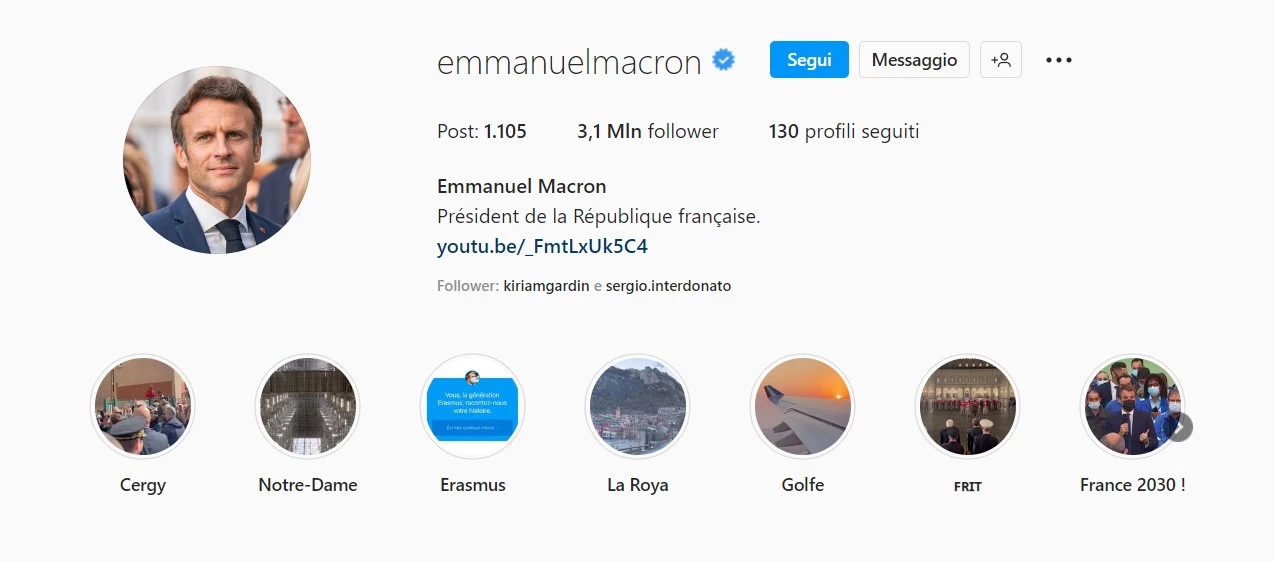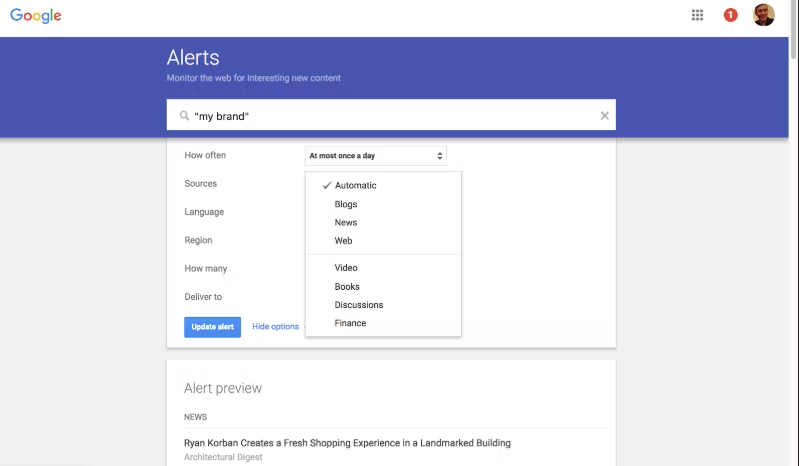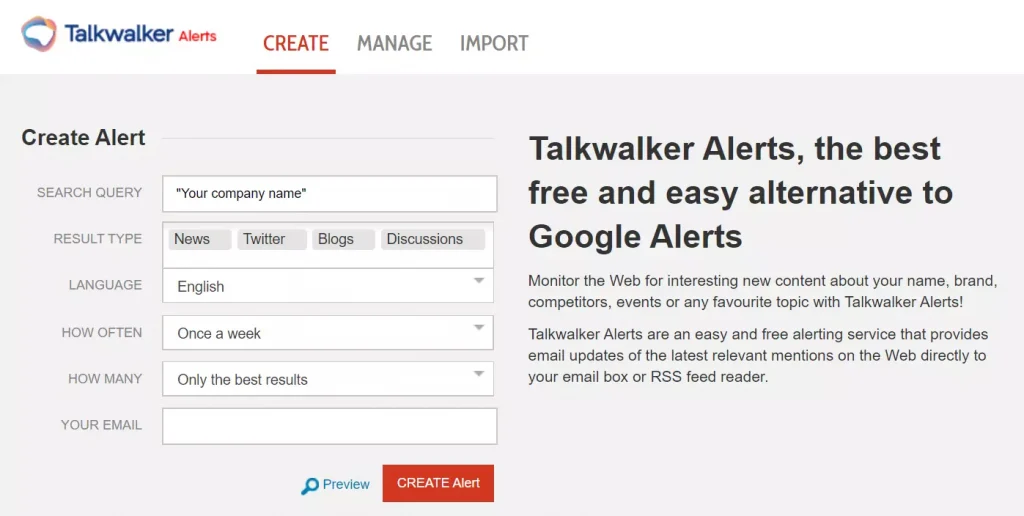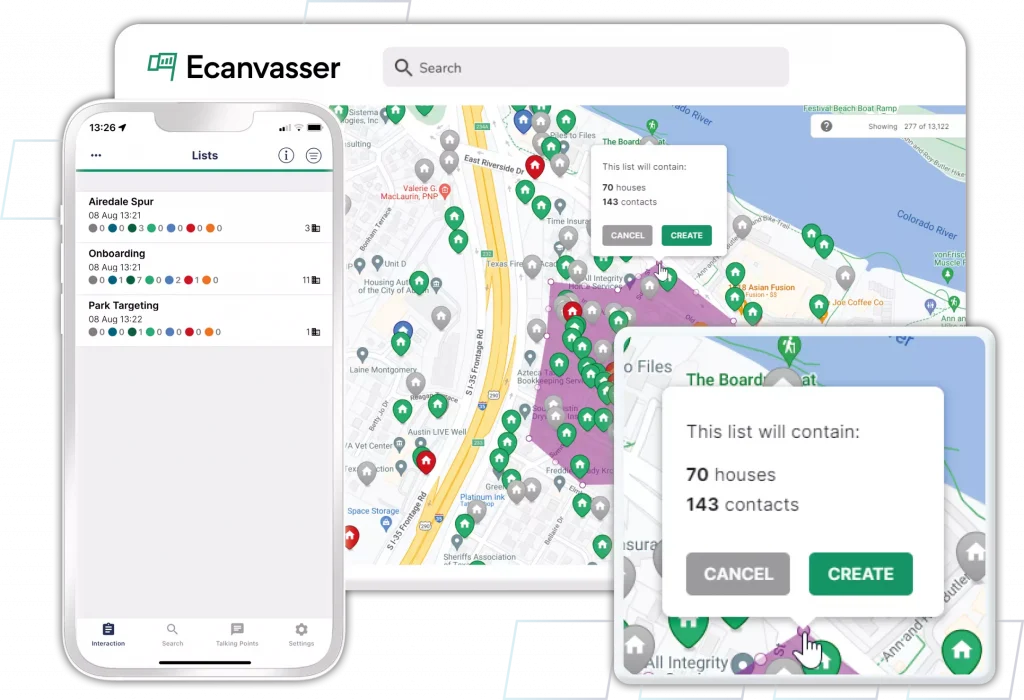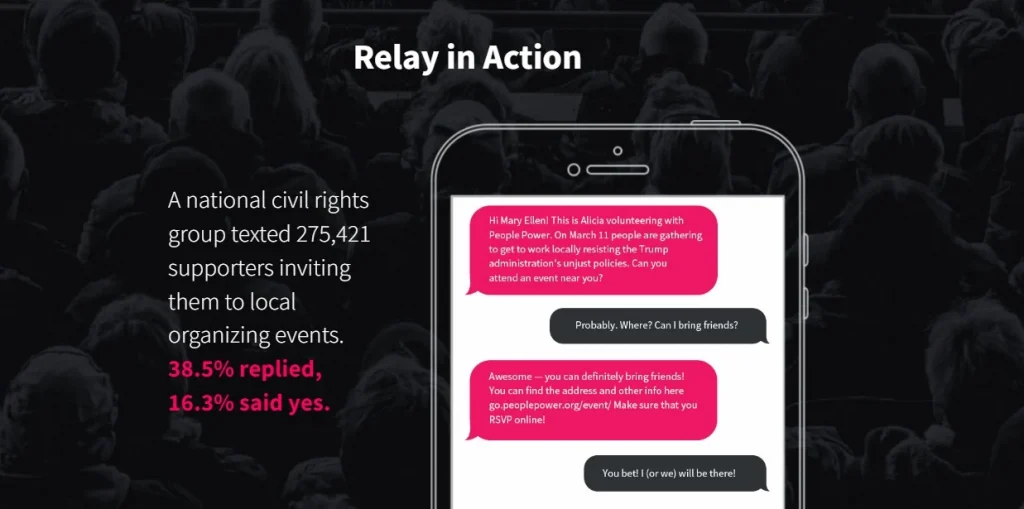Articles & Guides
Digital Political Communication: doing politics in the age of social media
in a nutshell
Examples from European political leaders, web monitoring, social bots, and tools of digital political communication, together with a downloadable canvas about grassroots campaigns: leverage the web to make your future-shaped political contribution.
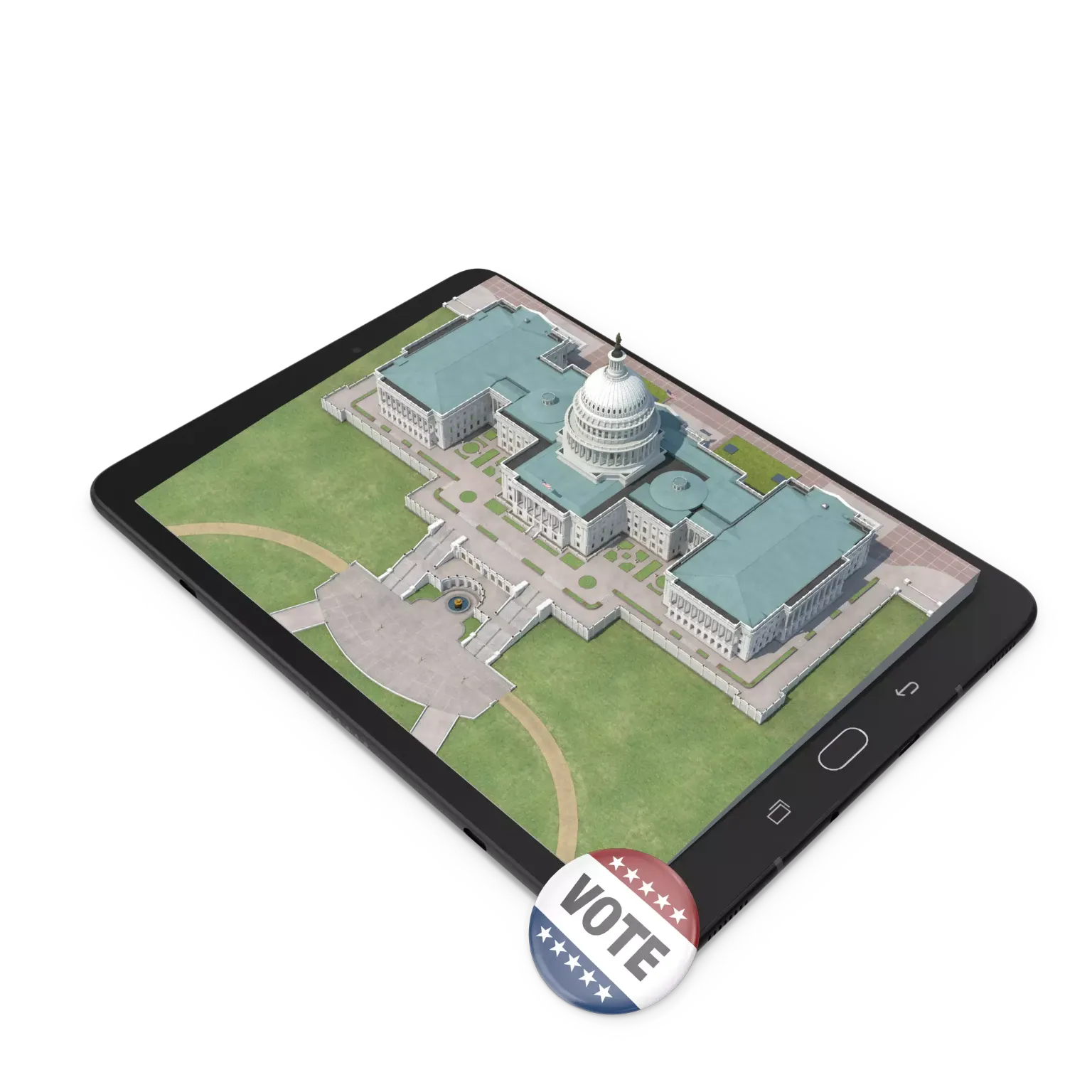

Don’t have time to read it all?
Here’s a brief summary of the key points in this guide.
What is political communication?
Politics needs communication at every level to fully achieve its goals. Consequently, political communication is presented as a multidisciplinary sphere of action, in which very different actors operate, but all of them are in some way connected to public affairs. Specifically, the three main actors are:
- • The political system (parties, politicians, institutions, and so on)
- • The media system (newspapers, television broadcasts, radio stations…)
- • Citizen-voters
So, political communication is first of all a strategy of mutual seduction between the politician and the public. But political communication also means knowing how to impose the politician’s point of view on the public. Two possible considerations regarding a good communication strategy could be the following:
- • The politician should not scan speeches regularly, as predictability tires the public and benefits opponents
- • Instead of systematically analyzing election results, the politician shoul base political talks on specific points of the action taken to give substance in the eyes of voters
[DIVE IN]
How does digital influence political communication?
Digital political communication represents the main way of doing politics in the new millennium. In the digital age, voters’ choice is influenced by superficial factors that assume immediate relevance: party image and candidate personality. On the web:
- • Politicians can target precise audience niches
- • They can open up multidirectional channels
- • Political content visibility can be increased
- • Failure to respond carries the risk of alienating the sympathy of voters
- • Those who ask for consent will always have to worry about listening to those who have decided to give consent
[DIVE IN]
How are social media helping digital political communication?
Social media are perhaps the most significant and peculiar tool of digital political communication. Parties and candidates use them in different ways, usually related to personal perspective on the effectiveness of a certain strategy. Being social provides undeniable advantages:
- • Many more voters are reached
- • The “propaganda” mode is spontaneous, uninterrupted and contextualized
- • Consensus building on digital platforms is reflected in reality
- • The community that is created is usually strong and affectionate
- • “Disintermediation” takes place
- • Prompt problem-solving intervention is possible
- • It is also possible to experiment with forms of participatory democracy
[DIVE IN]
How can I monitor my digital political communication?
For proper management of political activities online, the easiest and most effective monitoring tools to use are undoubtedly alerts. Let us look, therefore, at some of the most widely used ones:
- • Google Alerts is an easy-to-use and definitely reliable tool provided by Google
- • Talkwalker Alerts is probably the best free alternative to Google Alerts
- • Appinions is a web app that can measure a user’s influence based on “contextual evidence of impact”
[DIVE IN]
LEARN TO RIDE
Ready to surf the digital wave and become a leader in your industry? Join Execute.Club, where executives and managers like you can access resources, connect with peers, and get the no-nonsense help you need to succeed in the digital era.
Enter the ClubIntroduction
Digital political communication represents the main way of doing politics in the new millennium. “Doing politics”, now, means first and foremost knowing how to communicate effectively with your supporters but especially with the undecided, taking advantage of cyber meeting places: forums, sites, newsletters and – of course – social media. But the real news stemming from the contemporary approach concerns the reintroduction of the human factor at the center of electoral campaigns and, as a consequence, of democratic processes.
Toward digital political communication starting a long way back
Underlying the functioning of politics lies the need to send a message to voters and to the entire country. For this reason, communication represents an area of primary interest. The goal is to reach every citizen – and, more specifically, the heart of every citizen – so that they can understand the candidate’s manifesto and agree (or disagree) with its goodness. Of course, the ability to disclose a program is far from coinciding with the ability to make it understood.
Political communication has undergone a number of changes over the years. While in the past politics was discussed within cultural and party circles, today the mass perspective demands simplicity and immediacy. Message delivery is provided by social media and online communication agencies providing services such as website creation, industry blog solutions, and target audience engagement. The internet probably fosters a lower desire for in-depth coverage, but it allows it to reach people more easily.
What is political communication?
Politics, as we anticipated, needs communication at every level to fully achieve its goals. Consequently, political communication is presented as a multidisciplinary sphere of action, in which very different actors operate, but all of them are in some way connected to public affairs. Specifically, the three main actors are the political system (parties, politicians, institutions, and so on), the media system (newspapers, television broadcasts, radio stations…), and citizen-voters. Three categories linked together in ways that vary in nature, intensity, frequency, and content.
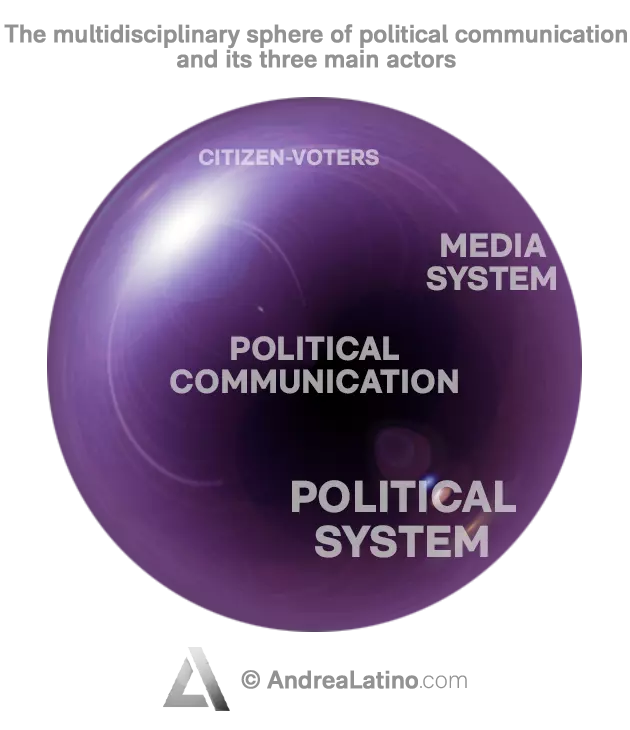
So, political communication is first of all a strategy of mutual seduction between the politician and the public. A broad conception refers, therefore, to all techniques and activities aimed at fostering the support of public opinion during the conquest of power or the exercise of office. After all, Jacques Gerstlé, a professor of political science at the University of Paris, defines this type of communication as the totality of “the communicative efforts made by those who seek to make people adhere – either by imposing it through propaganda or by making it acceptable through discussion – to public perceptions […] that will guide preferences”.
Political communication: what it is not
To avoid misunderstandings, it might be useful to clarify what does not fall under the definition of political communication. First, it does not coincide with public communication, despite the fact that the two expressions are often used synonymously. In fact, the public universe is far broader and also includes messages produced by non-political actors such as institutions, social partners, associations and nonprofit organizations.
At the same time, political communication cannot be reduced to mere political marketing either. The latter can be understood as a collection of practices put in place to promote a candidate’s fit with his/her electoral target audience, extend his/her potential voter base, and distinguish him/her from competitors. Therefore, political marketing is a phenomenon that thrives on temporary initiatives.
Some required features of political communication
Political communication is intimately linked to media developments and the growing importance of public opinion in democratic systems. For this very reason, the underlying logic says that the objective reasons why citizens are satisfied or dissatisfied with their rulers are less important than citizens’ own perceptions of their experiences. Indeed, historically, all forms of political authority are staged, narrations intended to impose or confirm status, mobilize citizens or – if necessary – convince them. And it is the demonstrated ability to deliver change that grants it a form of legitimacy.
The key word in political communication is credibility, sought through a combination of rational and emotional arguments. Being credible means being able to count on an attentive audience and influence ongoing debates. But to keep your reputation high you need to consider a few tricks. First, it would be ideal to maintain an advantage in a specific area (such as security or fighting inequality). Second, avoid taking ambiguous or contradictory positions. And lastly, never deviate too abruptly from the habits of your field of reference: a dissident opinion, even if well-founded, can lead to uncertainty about the future of a political career.
But political communication also means knowing how to impose your point of view on the public. It is a strategic operation, because it affects both the perception of the political direction you pursue and the person standing in front of voters on a local or national scale. In this regard, two possible considerations regarding a good communication strategy could be the following:
• Do not scan speeches regularly, as predictability tires the public and benefits opponents.
• Instead of systematically analyzing election results, base political talks on specific points of the action taken to give substance in the eyes of voters.
Politics Goes Digital
What is digital political communication?
In the late 1990s, the media industry began to wonder when the first actual online election campaign would take place. After all, the internet was still a world completely separate from the real world. Today, we are in a phase of accelerated, extensive digitalization with disruptive characteristics, which has allowed political communication to land permanently on the internet. The logic of the web involves every social and political practice, while society as a whole adapts to a new “ideology of communication”. In contemporary times, digital communication has taken over as the main channel for participating in political activities. Barack Obama was perhaps the greatest forerunner of this trend.
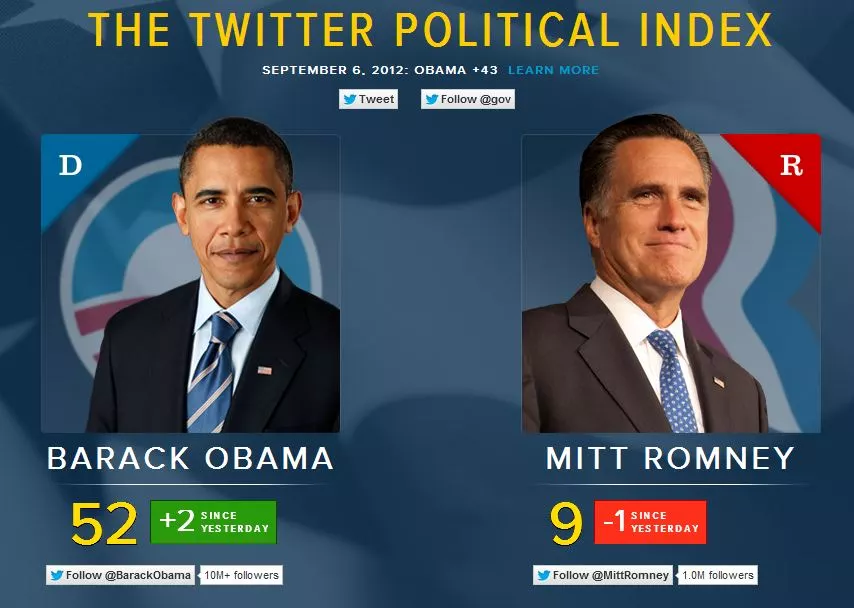
Typical business activities such as online reputation management or personal branding strategies can also be applied to political figures. However, if an entrepreneur’s ambition is to sell a product or service, a party leader wants to convince voters that his or her political offer is the best on the market. The citizen, then, is transformed from a mere lead to a real customer through a transaction that is often more valuable than a cash exchange: the vote.
The implications of digital political communication
In the digital age, voters’ choice is influenced by superficial factors that assume immediate relevance: party image and candidate personality. We could see these as cognitive shortcuts that simplify the political process of information, a time-consuming and mentally energetic activity for most voters. The bounded rationality typical of human beings deadens the chances of a citizen making a rational choice based truly on campaign programs and issues.
Political communication, however, still suffers under the weight of traditional media such as televisions and newspapers, in which the message conveyed is necessarily generalist and unidirectional. On the web, on the other hand, it is possible to target precise audience niches, opening up multidirectional channels. Consequently, those who ask for consent will then have to worry about listening to those who have decided to give consent. Failure to respond carries the risk of alienating the sympathy and participation of voters, who could quickly trigger a viral insurrection.

A major challenge of parties, politicians, and the entire representative and parliamentary democracy, therefore, is to succeed in meeting the growing expectations of citizen participation. The origin of this trend can be traced to rising levels of education and changing social values. The typically predigital claim of political leadership is now poorly digested.
Some related issues
Since the second half of the nineteenth century, with the rise of the modern mass press, journalism has assumed the function of watchdog of democracy, mediating between civil society and the political system. If one tries to inquire about any topic via the internet, however, algorithms (e.g., Google’s or Facebook’s) come up with information that varies from person to person and comes, for the most part, from non-journalistic sources. Yet, research on the use and effects of media has not revealed huge problems from a political perspective in digital communication.
Surely negative phenomena such as the free circulation of racist slurs on social media and the increasing attention gained by extremist, intolerant and xenophobic movements (previously entirely marginal) are misinterpreted as a direct consequence of the new political possibilities offered by the web. That is why we still only consider content control and elimination as an effective solution. But the reality is that the online circulation of racism and fake news can have substantial political consequences, giving rise to the need for education on the subject.
The one thing that seems certain is that mediated communication has almost no concrete influence on changes of opinion. Instead, media have an effect on the “activation” of thoughts in users who already demonstrate certain predispositions. So, the cause-and-effect relationship is different: people who share expectations or prejudices tend to exclusively frequent forums, blogs and pages that travel in the same direction as them. The internet only facilitates their access and increases the visibility of certain content.
The role of social media
In order to be able to understand the workings of today’s political communication, studying each web platform individually or comparing the internet and the offline world does not really make sense anymore. Physical events such as rallies and press conferences end up intertwined with the narration of them within digital spaces. Photos are posted, discussion threads link to hashtags, direct video feeds appear on social networks.
Social media in particular are perhaps the most significant and peculiar tool of digital political communication. Parties and candidates use them in different ways, usually related to personal perspective on the effectiveness of a certain strategy. For example, the type of content posted, or the level of interactivity highlighted varies. But these are not the substantial differences. Virtually every world leader today has a personal account or an official page on the most widely used social networks. At the end of the day, being social provides undeniable advantages:
- • Many more voters are reached, in a virtual place in which hours are spent daily regardless of the presence of political discourse.
- • The “propaganda” mode is spontaneous, uninterrupted and contextualized.
- • Consensus building on digital platforms is inevitably reflected in reality.
- • The community that is created is usually strong and affectionate, and tends to nurture advocacy of the political message in similar circles.
- • “Disintermediation” takes place, i.e., no need to use newspapers or television stations to approach voters or potential voters.
- • Prompt problem-solving intervention in the case of reputational crises is possible.
- • It is also possible to experiment with forms of participatory democracy (the obvious example is the Italian attempt of the 5 Star Movement founded by Beppe Grillo).
The risk, however, is to fall into the paradox whereby the network and its users can bend political messages to their liking. The use of a narrative that is consistent with one’s own experience and cultural and political affiliation, and that fits smoothly into the custom of social networks, must therefore be unavoidable.
Otherwise, there occurs what happened during the first lockdown around Campania President De Luca’s bursting live streams. But, more generally, the alienating effect is clear in the practice of polbusting (the ironic subversion of political messages and content) and the emergence of memes.
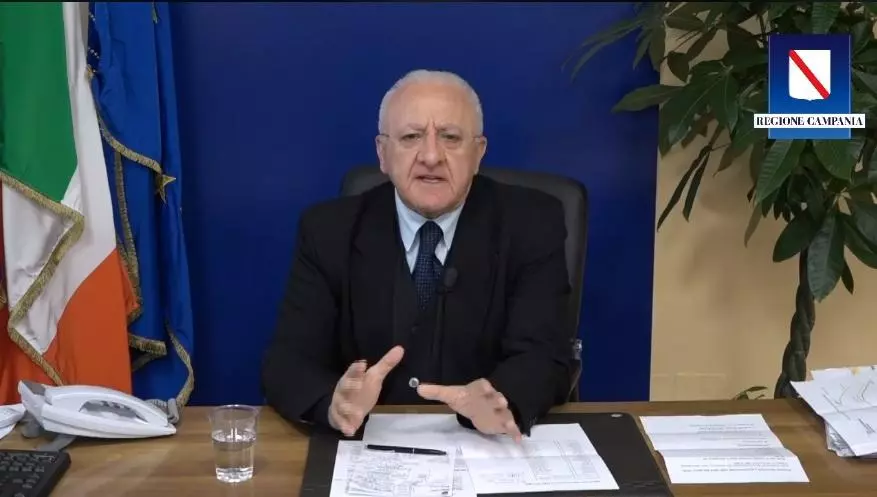
Some Examples
Some examples of digital political communication
Digital political communication is a practice now adopted by all European political leaders who want to continue to make their voices heard and reach an increasingly wide audience. The Council of Europe has therefore published a list of guidelines addressed to its 46 member states to prevent new digital political communication strategies from undermining the fairness and legitimacy of electoral processes.
The main threats to be nipped in the bud include misuse of personal data, bots, algorithms and microtargeting, as well as recurrent disinformation campaigns. The guidelines are expressed in the form of recommendations, but – establishing certain principles – they aspire to ensure transparency in online electoral communication and expenses, prevent voter manipulation, and ensure equal and fair competition between parties and candidates. Other challenges not to be forgotten, then, are content regulation, data protection and media coverage of campaigns.
Digital political communication in Italy
As anticipated, peculiar to Italy is the political experience of the 5 Star Movement. The political party, born in 2009, was in fact shaped on the web – the easiest place in which to intercept the rampant resentment and anti-politics among Italian voters. The internet is the strategic tool used by the Pentastellati to promote their initiatives, make propaganda, and encourage forms of democracy even within the Movement itself. Founder Beppe Grillo’s blog is among the most widely followed in the world, and the merits of the growth of the party itself can be attributed at least in part to the Web.

Another significant case concerns Matteo Renzi, who, in his role as secretary of the Democratic Party, built his consensus time after time on the internet until he became Prime Minister. It is also true, however, that in 2016 he lost his own constitutional reform by mis-strategizing on the same playing field. In short, it would be wrong to argue that a large following on social media necessarily implies victory from an electoral standpoint. Yet, it is undeniable that platforms such as Facebook, Twitter or Instagram have forever revolutionized the rules of political competition and the arena in which it takes place.
Finally, if you’d like a firsthand example, told and experienced by me personally, you can read about how I reshaped the digital identity of a Vice President of the European Commission here.
Digital political communication in Europe
In almost all European countries, more or less effective forms of digital political communication occur, depending on the developed understanding around the potential of the IT medium and the opportunities to use it. For example, in the context of Swiss and Austrian parties’ media planning during electoral campaigns, the presence on social networks seems almost to become an obligation, rather than a reflection of a conscious strategic vision. Indeed, online campaign promoters speak of direct interactivity as the main reason for using social. As a result, they remain a secondary communication channel, shrouded in skepticism regarding the real benefits they could bring to campaign effectiveness.
In 2014, during Hungary’s general election period, posts disseminated on Facebook by leftist opposition parties received the highest number of shares. Yet such a spread was not due to the general informational content, structure, or timing of publication, but rather to the highly emotional nature and subjective personal comments made. However, once shared, the posts were very short-lived, in the sense that there was not much resonance among users. With one exception: if the post was reposted by an important personality, a famous opinion leader or another politician, then it generated a far greater and lasting resonance.
The case of Belarus
In contrast to Western Europe, the specific possibilities offered by the web to foster communication between politicians and voters and establish a regime of digital democracy are not considered in Belarus. The internet is a useful tool to circumvent the censorship of traditional media: there is no public space in the country in which citizens are free to express personal political opinion. President Lukashenko also secured fifteen years of power through the suppression of political dialogue.

But it is precisely in an authoritarian situation such as Belarus – and as demonstrated outside Europe in China, Egypt, and Iran – that digital political communication could enable the creation of new public environments where free political discourse is allowed. First, however, it is necessary for the network to be properly understood by all independent media and, above all, by every democratic actor: not a traditional mass media such as radio and television, but a digital discussion space where anyone can participate, regardless of time and place.
Do you have a Public Affairs & Comms challenge to tackle? Let’s face it. Together.
C-levels from these companies (AND MORE) relied on my expertise to overcome thEIR CHALLENGES IN THIS AREA. And you can, too.
Can I help you?Welcome to the Internet
Web monitoring for political communication
Successful digital political communication also requires a thorough understanding of the medium being used. It will therefore be necessary to constantly monitor trends promoted by the web and on social channels, identifying keywords, hashtags, and articles, interpreting user behavior and the contributions they make through likes, comments, and shares. A complicated challenge, as it relates to a context of cognitive overload.
Recent years have seen the development of applications and sites such as Kred or PeerIndex, which use algorithms to probe a user’s social profile, record their level of activity and engagement, and ultimately return a score that represents their reputation potential on the web. A logic according to which more content interactions and re-shares result in higher influence. But this is not how it works: the system assigns a quantitative evaluation rather than a qualitative one.
Digital political communication: the best monitoring tools
For proper management of political activities online, the easiest and most effective monitoring tools to use are undoubtedly alerts. In fact, it is enough to enter a keyword related to people, brands or topics and the tool will send an alert to the interested party whenever the topic in question is mentioned.
The most comprehensive analytics platforms provide a set of Key Performance Indicators to assess the productivity of hashtags, campaigns, or brands through metrics such as engagement, scope, or sentiment. Of course, the quality and refinement of the data obtained varies significantly from tool to tool. Let us look, therefore, at some of the most widely used ones:
• Google Alerts is an easy-to-use and definitely reliable tool provided by Google. The tool scans the web far and wide and sends an e-mail with search results once the keyword is identified.
• Talkwalker Alerts is probably the best free alternative to Google Alerts. It is a must-have for professionals who manage political activities on the web and social networks. It is a comprehensive and powerful social monitoring and listening tool that allows you to keep an eye on most of the conversations developed online by entering a few keywords.
• Appinions is a web app that can measure a user’s influence based on “contextual evidence of impact”. The goal? To be more reliable than platforms measuring popularity on quantitative metrics and provide useful data from millions of sources: blogs, social networks, online forums, newspapers and so on. Appinions can: analyze the opinions expressed by people on issues and brands, give equal importance to new and traditional media, put context first (without context there is no metric). It can also inform about the virtual place where a certain topic is most discussed, provide a comparison of influence related to a specific topic, and analyze the trend of influence itself. It tells about the credibility of an “influencer” in relation to their target audience, the sentiment toward them, the validity of their opinions, and the reactions of their public.
The manipulation of political communication through bots
The internet, we know, is a double-edged sword, offering many opportunities but at the same time hiding many pitfalls. And political communication itself is not immune to the network’s disturbing potential. One of the most recurrent and alienating ones is computational political manipulation, or the assemblage of social platforms, autonomous agents, algorithms, and Big Data with the aim of conditioning public opinion.
What is computational political manipulation?
Progress in computer technology, and particularly in automation, machine learning and Artificial Intelligence, has caused computational propaganda to rapidly become more sophisticated and difficult to track. Political manipulation on the internet has now become an act of prediction and association by political actors or simply politically inclined users capable of employing intelligent algorithms.
It is an act of techno-politicization aimed mainly at very precise microtargets to influence their public sentiment, shape their political thinking, and threaten the ideology of those in power. The key players in computational political manipulation are social bots, which are used to disseminate baiting messages to the computerized masses and orient the thoughts of the user identified within the sphere of political interest.
Social bots in digital political communication
In platforms such as Twitter and Facebook, bots have the function of producing and disseminating streams of information (or, more appropriately, disinformation). They interact with users and influence their perceived information environment to create a climate of false opinion and post-truth. Basically, they assume the identity of a human being – often, it must be said, with pitifully comical results – and exploit the potential of social networks to provide opinions, news, and information. But they can also perform annoying operations such as sending spam or inciting hatred.
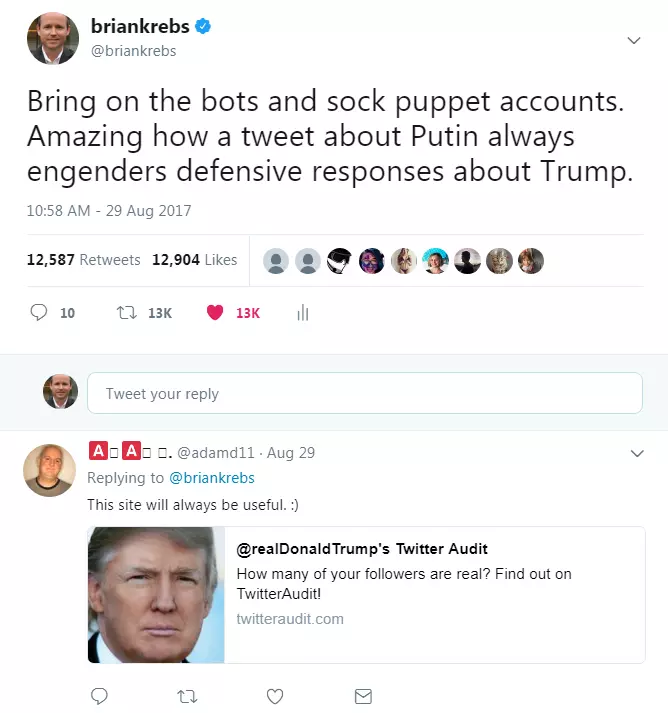
Social bots are (far) more active than flesh-and-blood users: they can post messages quickly and mass-produce replicas of them. But they cannot entirely prescind from their relative human counterparts: their behavior is inseparable from the intentions of the original manipulators. Automated software reads data and algorithms from social platforms and generates personalized content to increase recognition and credibility in the eyes of users. And they are even capable of regenerating themselves: as news from the political world is renewed, bot accounts delete previous tweets or posts, change their usernames, and reappear with an entirely new face.
The effects of social bots on political communication
There are different types of bots. The simpler ones serve only to increase the number of followers or likes of a post, but they are easy to track and are therefore “kicked out” early by the platforms. An intermediate type includes more complex social bots, capable of dynamically adapting the information shared according to the content and accounts being considered. Finally, so-called cyborgs are sophisticated hybrid bots in which the human contribution in terms of content creation and whatnot is evident (and are, consequently, more difficult to unmask).
Nevertheless, an observation of the actual influence of social bots reveals weakness and inability to initiate a large-scale retweeting effect. They have, yes, the ability to convince some human beings to share their publications, but the frequency with which this happens is really low compared to that related to exchanges between real users. In any case, the circumstances created by the management of digital disinformation probably hide a broader crisis of public communication.
toolbox
The tools of digital political communication
Politicians not only use tools for monitoring, but also for the very management of digital political communication and campaign promotion. Digital technologies administer web, social, and e-mail, and organize data collection, fieldwork, fundraising, and volunteering.
So here is where digital political communication software provides financial, management, and tracking capabilities, but it also allows you to upload a database of potential voters and helps candidates run campaigns more effectively. Typically, some programs even offer demographic and behavioral data, polling tools and other capabilities such as regulatory compliance monitoring.
Main platforms used
NationBuilder is one of the most widely used nonpartisan tools in the world, especially in the United States, Canada, the United Kingdom, and Australia. It can increase the operational efficiency of a campaign through dynamic profiling of supporters. It can be used to create professional websites, send advanced e-mail, and text communications, fundraise, and more. Jacinda Ardern became New Zealand’s youngest female prime minister in just a few months with the help of NationBuilder, which enabled her to meet all her fundraising goals before winning the election. Or again, the French party founded by Emmanuel Macron in 2016, La Republique En Marche, was built from scratch with NationBuilder, won 350 seats in Parliament, and changed the history of French politics.
Ecanvasser is political campaign management software created specifically for propaganda. It can plot research routes and assign them to groups of volunteers, fragment communities according to survey responses, demographics, or past actions. It is a program that combines field operations management with concrete data analysis. All of which can be conveniently verified through a mobile app.
Relay is a political messaging tool that enables personal and direct interaction with each voter. Voters can write text messages and get a tailored, non-automated response from the actual members of the political communication team. It is a system to bring the two worlds closer together and make each supporter feel heard and valued. But it also allows you to recruit volunteers, send invitations to events, or try to increase turnout on election day. Finally, it can help collect important data by asking recipients to fill out an RSVP form for an event or to confirm that they voted.
Fundly is a crowdfunding platform designed for individuals and organizations, perfect for political campaigns. In fact, it follows the “keep-it-all” formula: creators of a campaign will receive all funds raised even if they fail to reach all of their set goals. In addition, creating a campaign is free: you pay a 4.9 percent commission and credit card processing fees only when you start registering voluntary pledges. The blog has a multitude of features, such as customized fundraising pages, social sharing, and spaces to tell your story. Setting up a fundraiser thus becomes quick and easy: just indicate the desired outcome, write down the destination of the amount raised, add images, and finally, share the campaign on social or via e-mail.

Grassroots Campaigns
Digital political communication: grassroots campaigns
A blade of grass is fragile, it breaks easily. But a clump is harder to uproot because the roots help each other with strength and perseverance. Alone, the grass is helpless and ineffective; together, the grass is more powerful and even invasive. This is the idea on which grassroots campaigns are based: when inside a united group, each individual can produce great change.
What are grassroots campaigns?
Grassroots campaigns are organizations made up of many people working together to achieve the same goal. They are usually started by passionate individuals who come together for the good of their community. However, they also have limited economic resources, so they must know how to strategically manage costs and investments. After all, they do not involve expensive advertising campaigns or well-paid professionals – they are composed of volunteers, working together to achieve a goal (passing a referendum, electing a political candidate, etc.).
So, the backbone of a grassroots campaign is volunteers, who should carry a wealth of different viewpoints, backgrounds, and experiences. After all, these movements are by definition local and work to bring about change in the community of the participants. They are, therefore, about personal issues, which is an incentive to become more engaged. And the residents of an area will be able to provide the best solutions on where to hold town meetings and in which neighborhoods to solicit votes. Members of a grassroots campaign will also be better at recruiting, since they will surely have friends or relatives in the area.
Yet although grassroots campaigns are made up of volunteers, leadership still remains necessary. It can be achieved through a hierarchical structure, dividing the movement by committees or functions. The important thing is that everyone can participate and be heard. Leaders need to know how to organize teams and then coordinate them. At the same time, individuals need to be able to contribute, because they are the real strength of the crusade.
But a successful organization can also be recognized by its brand: logo, message, and spokesperson. A simple but consistent design gives the campaign a well-organized look that, over time, people will recognize. It is not just about being credible and standing out, but also conveying to participants and supporters a sense of unity, belonging, and mutual support.
Grassroots campaigns, technology, and organization
Grassroots campaigns are definitely a privileged opportunity for digital political communication, as the Web allows anyone to be reached in a matter of seconds. However, the local nature of these initiatives means that public opinion – judge of success or failure – must be won through face-to-face interaction. Town assemblies, door-to-door surveys, information tables in public places: these are excellent opportunities to orient and assess individual attitudes.
DOWNLOADABLE FILES
- Grassroots Campaign Pillars – Download now!
In short, a grassroots campaign makes it possible to tackle a shared problem as a group, but also to win an election or pursue a public policy plan. The key to all this is one: be organized. For example, an effective solution might be to catalog and evaluate the entire participatory effort: new volunteers will want to know who came before them, how well past strategies worked, and what the results were. In addition, funders, public officials, the media, and other possible contributors to expansion and strengthening will first want to know what efforts have been made and what their consequences have been.
Examples of grassroots campaigns in digital political communication
Grassroots campaigns are seen by many as the future of politics, as they engage the masses to produce effective political change. They are movements that create community involvement, stimulate public sentiment, and grow without demanding large amounts of financial aid.
KnockEveryDoor is an organization made up of and run by volunteers, born in the wake of the 2016 presidential election and created by a group of former members of Bernie Sanders’ presidential campaign. Members undertake a particular kind of door-to-door canvassing across the United States: they do not want to sway voters toward supporting a specific candidate, but to encourage them to engage in conversation to understand what they think about current politics and what their most immediate concerns are. The results seem to show that dialogue can indeed change people’s minds. The volunteer scripts are based on the “deep canvassing” method pioneered by the Los Angeles LGBT Center’s Leadership Lab.

Swing Left gathers progressive volunteers from “safe” congressional districts (places where one party has garnered an overwhelming majority) and connects them with “swing” districts (in which, by contrast, the winner of the last House of Representatives election was chosen by a slim margin). The founders of the movement are three friends from different sectors with little political knowledge. Still, the grassroots campaign has been a sensational success: it has organized more than 300,000 volunteers in swing districts, raised $2.9 million from more than 40,000 individual donors in support of Democratic candidates, and thus capitalizing on the wave of popularity of the progressive movement.
End Rape on Campus is an initiative working to end sexual violence on campuses through direct support for survivors and their communities. It needed its supporters to speak out about a proposed regulation related to the Ninth Amendment. But the means to do so were complicated: difficult-to-navigate websites, confusing texts, and reluctance to tell a personal story. The solution identified involved devising an advocacy campaign on the legislation to educate about how and why to participate and to provide a tool for commenting. All within the same webpage. The project ended with a thorough report on the impact of the operation, which generated over 6 thousand individual comments.

An important message for you
Hi there! I hope you found this article insightful.
Allow me to introduce myself. I’m Andrea Latino, the author of this article.
I have spent over a decade earning the trust of world-class multinationals, institutions and startups for their digital and innovation initiatives.
Are you curious about my story and how I could help you?
See how I can help youStay in wonderland
Let me show you how deep the rabbit hole goes.
Here are more Articles & Guides:

Articles & Guides
Digital Communication: how to develop an effective one
March 15, 2023
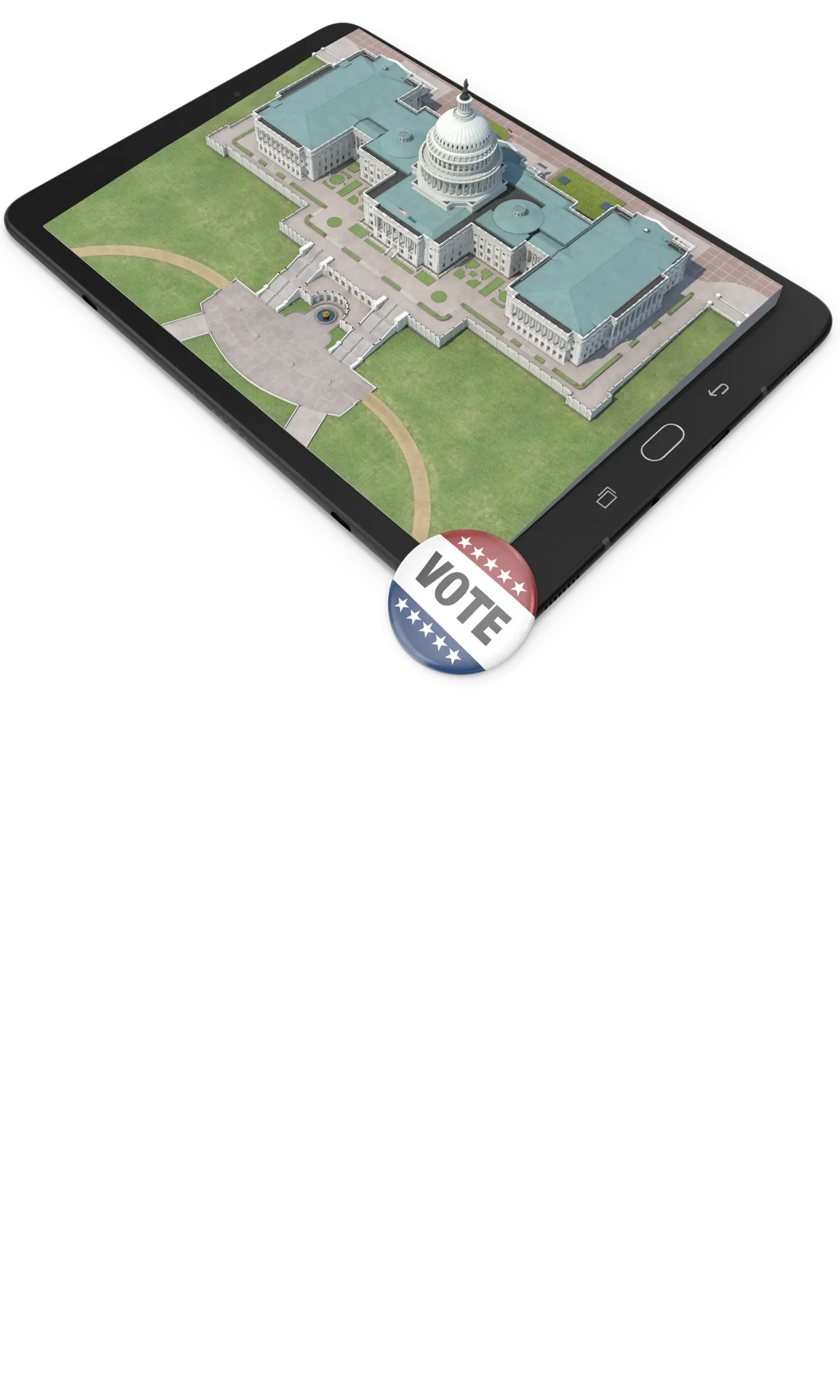
Articles & Guides
Digital Political Communication: doing politics in the age of social media
March 15, 2023

Articles & Guides
Digital PR: public relations in the digital age
March 15, 2023

Articles & Guides
Digital Public Affairs: how to employ effective institutional communication
March 15, 2023
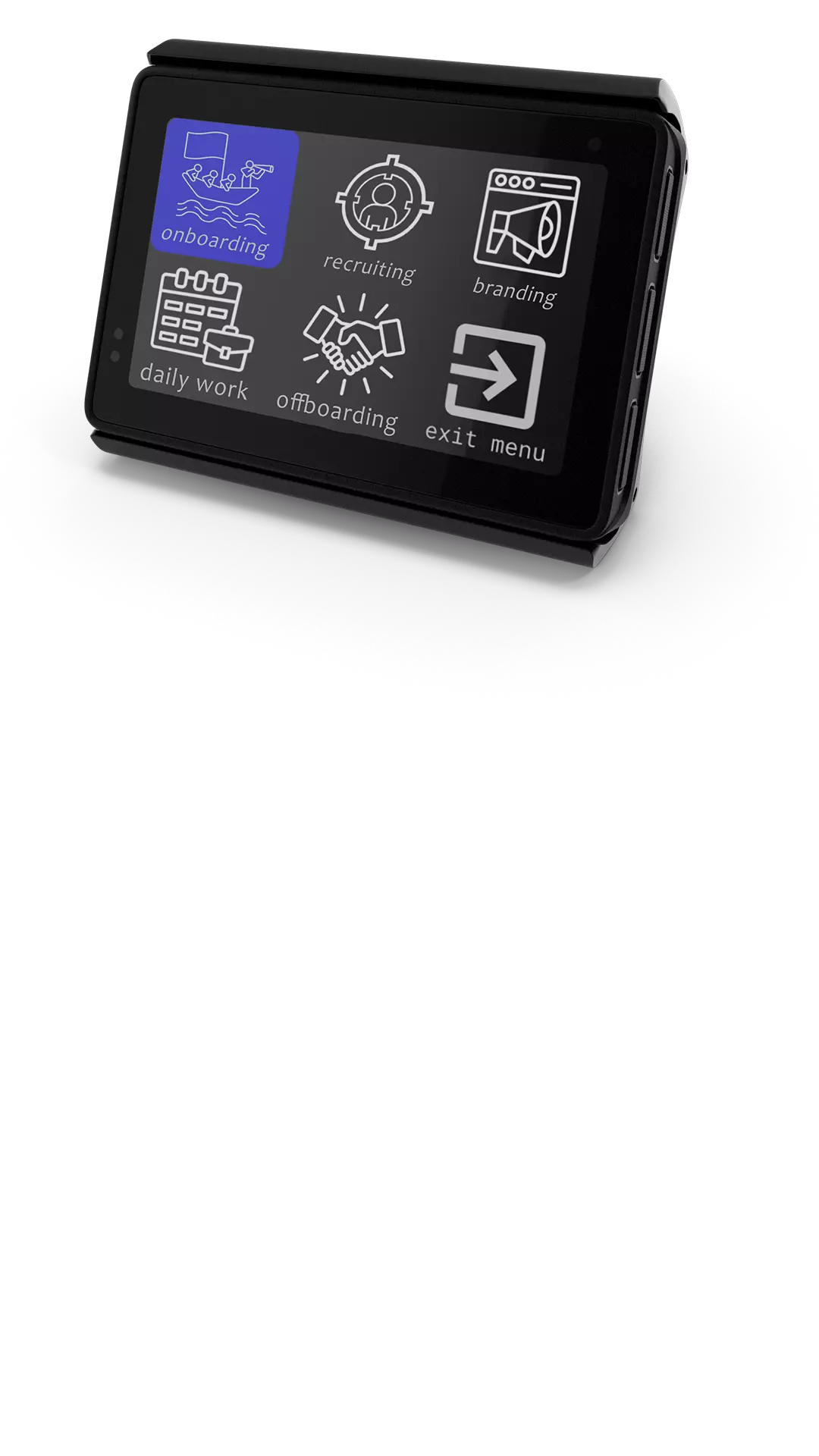
Articles & Guides
Digital Transformation for Human Resources: stages, tools and new skills
March 15, 2023

Articles & Guides
Editorial Plan: how to build a winning one
March 15, 2023

Articles & Guides
Employee Journey: how to track employee experience in 6 simple steps
March 15, 2023

Articles & Guides
Innovation Strategy & Innovation Management: best practice and examples
March 15, 2023

Articles & Guides
Digital Tools & Innovation Resources: the best sources for your innovation process
March 15, 2023

